Abstract
1. An investigation was undertaken in the spontaneously breathing, anaesthetized rabbit to observe the response of vagal sensory endings to inflation and deflation stimuli which were sufficient to produce Hering—Breuer reflexes.
2. When artificial changes in lung volume were produced by applying step changes in intratracheal pressure, activity in pulmonary stretch receptors increased with inflation and decreased with deflation.
3. A small number of vagal afferent fibres were encountered which exhibited a discharge with a respiratory modulation consisting of an increase in activity during the phase of expiration. This pattern of discharge was accentuated when the animal was artificially ventilated with the chest either open or closed.
4. These expiratory receptors were stimulated by step changes in intratracheal pressure of -5 and +15 mm Hg to produce a high frequency, slowly adapting discharge which persisted for the 10 sec period of the pressure application. The endings were localized in the extrapulmonary bronchi and lung parenchyma and the afferent fibres were myelinated with conduction velocities of 10·6-29·5 m/sec.
5. The pronounced effect of deflation stimuli on the endings indicates that they probably act as one of the afferent mechanisms in the Hering—Breuer deflation reflex.
Full text
PDF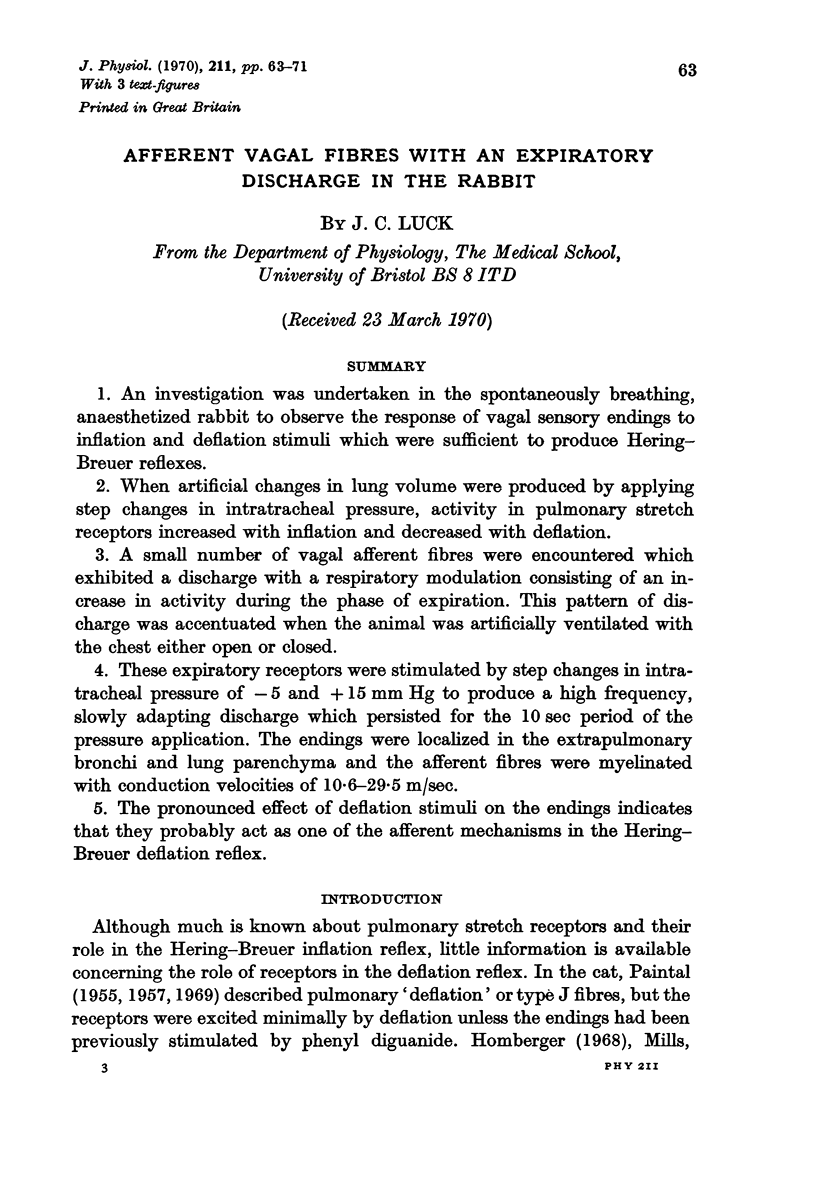

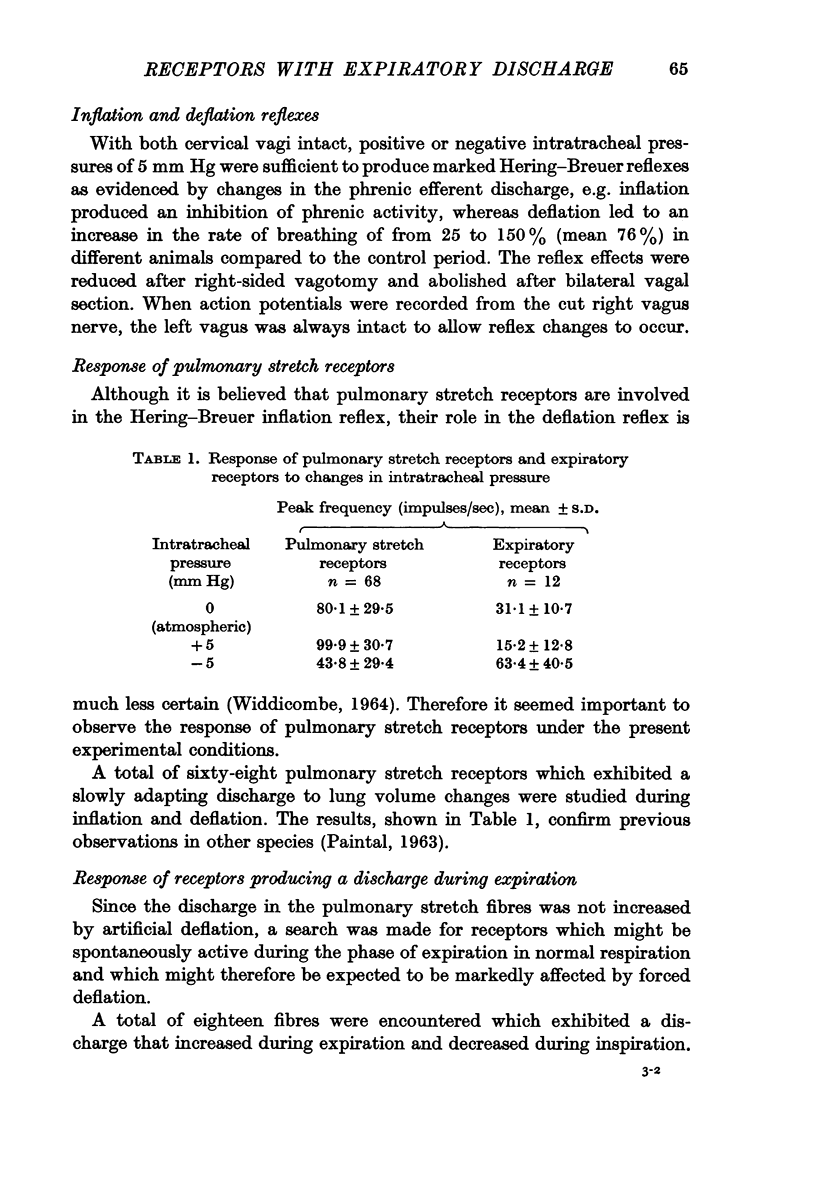
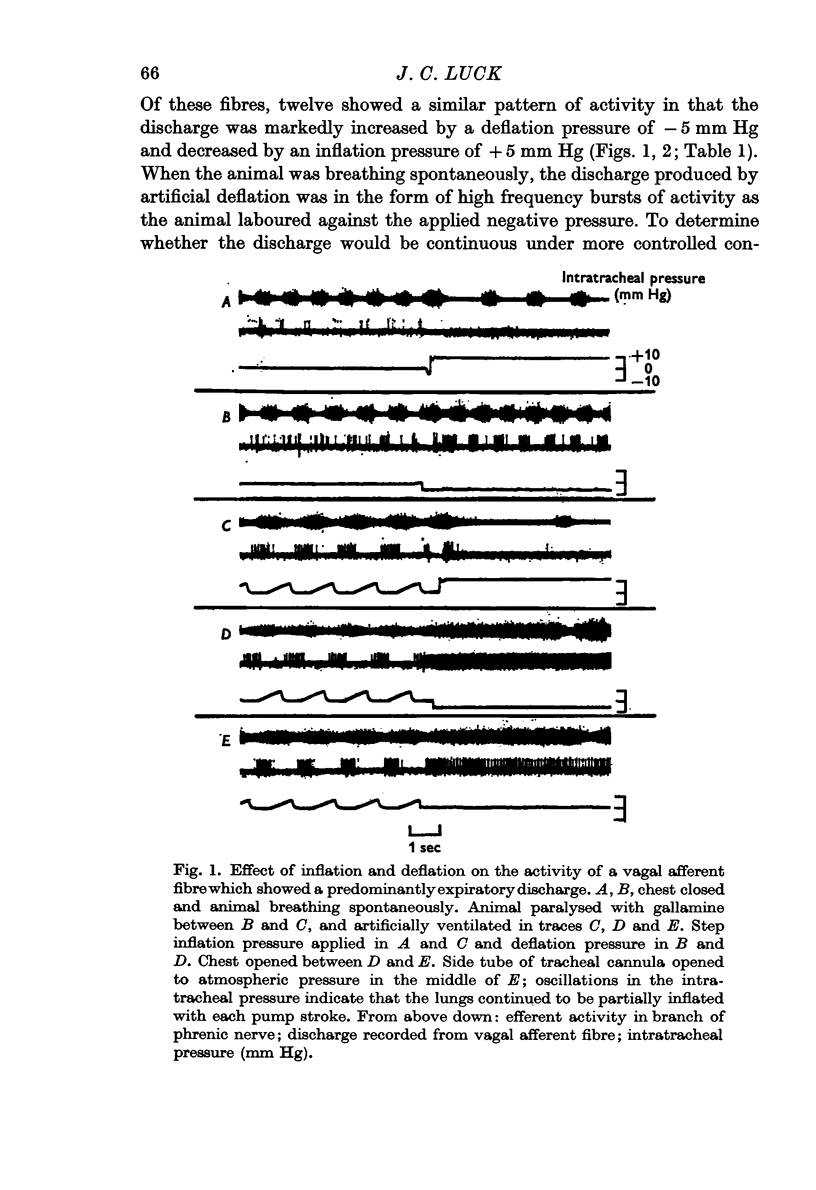
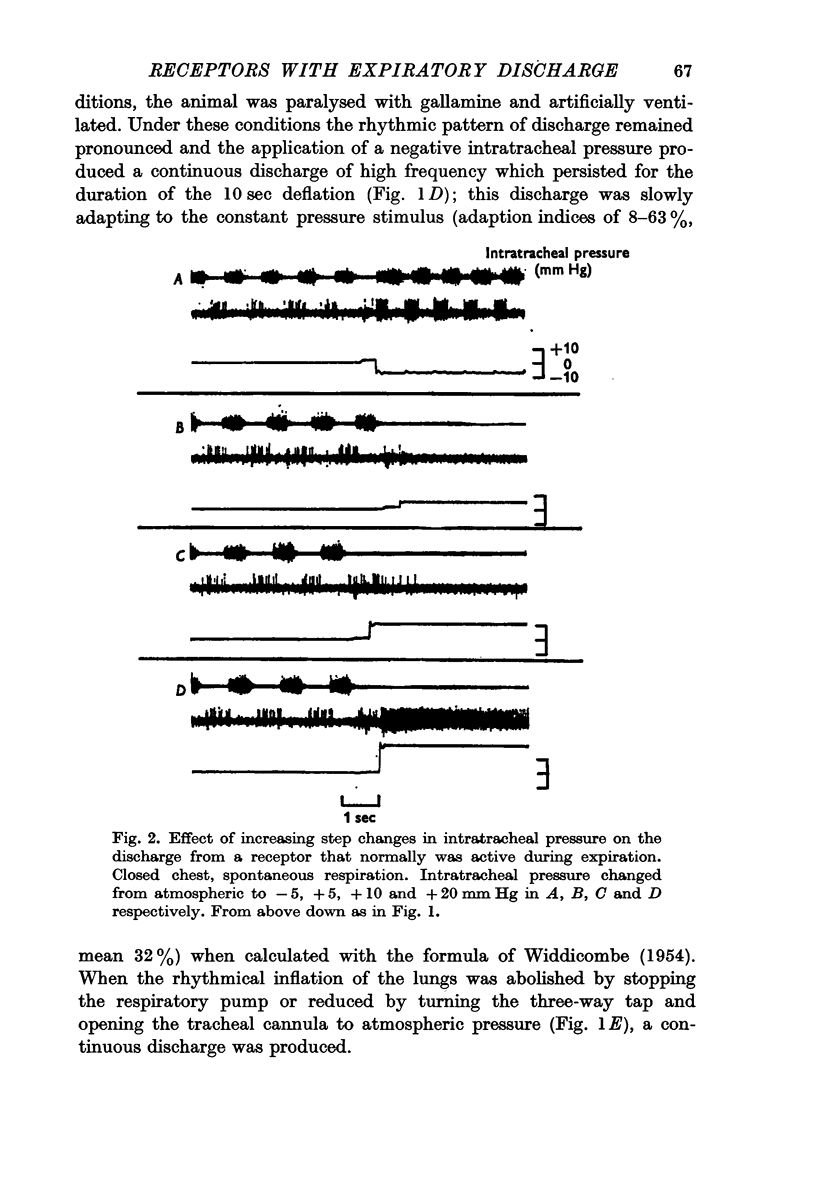
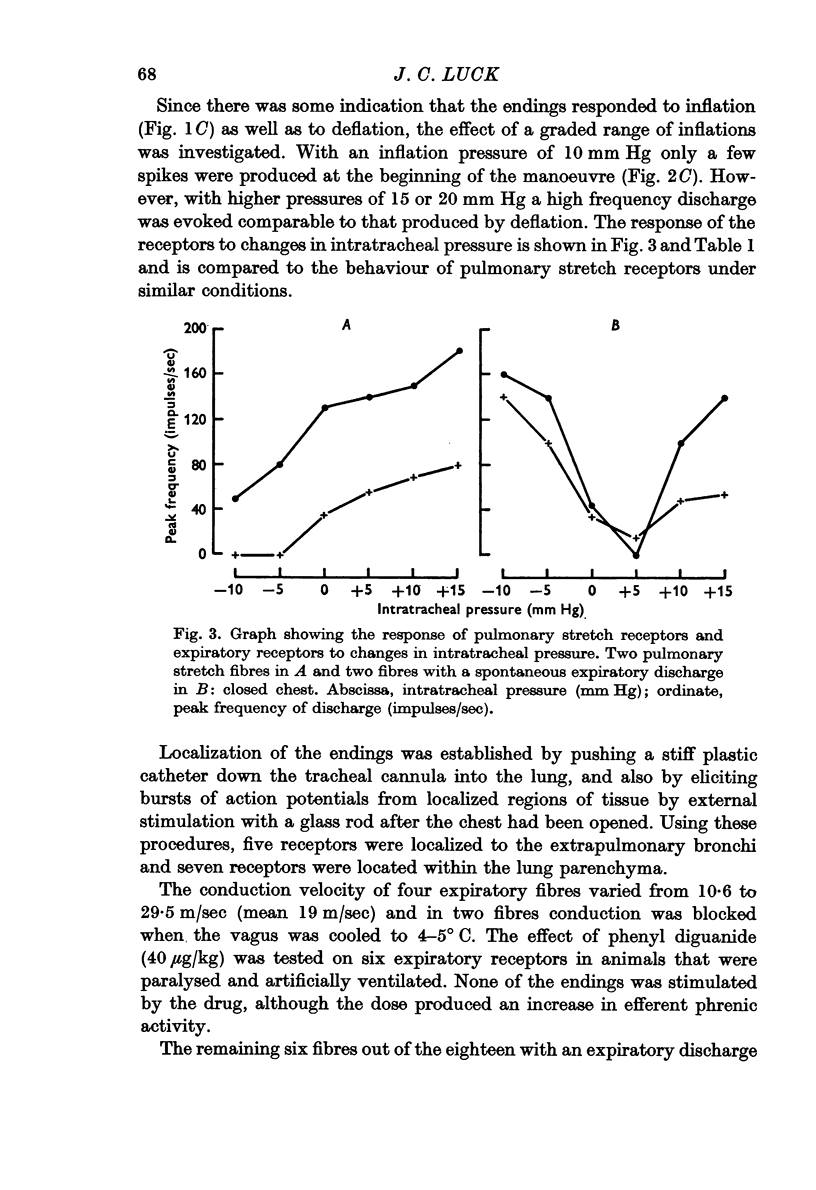
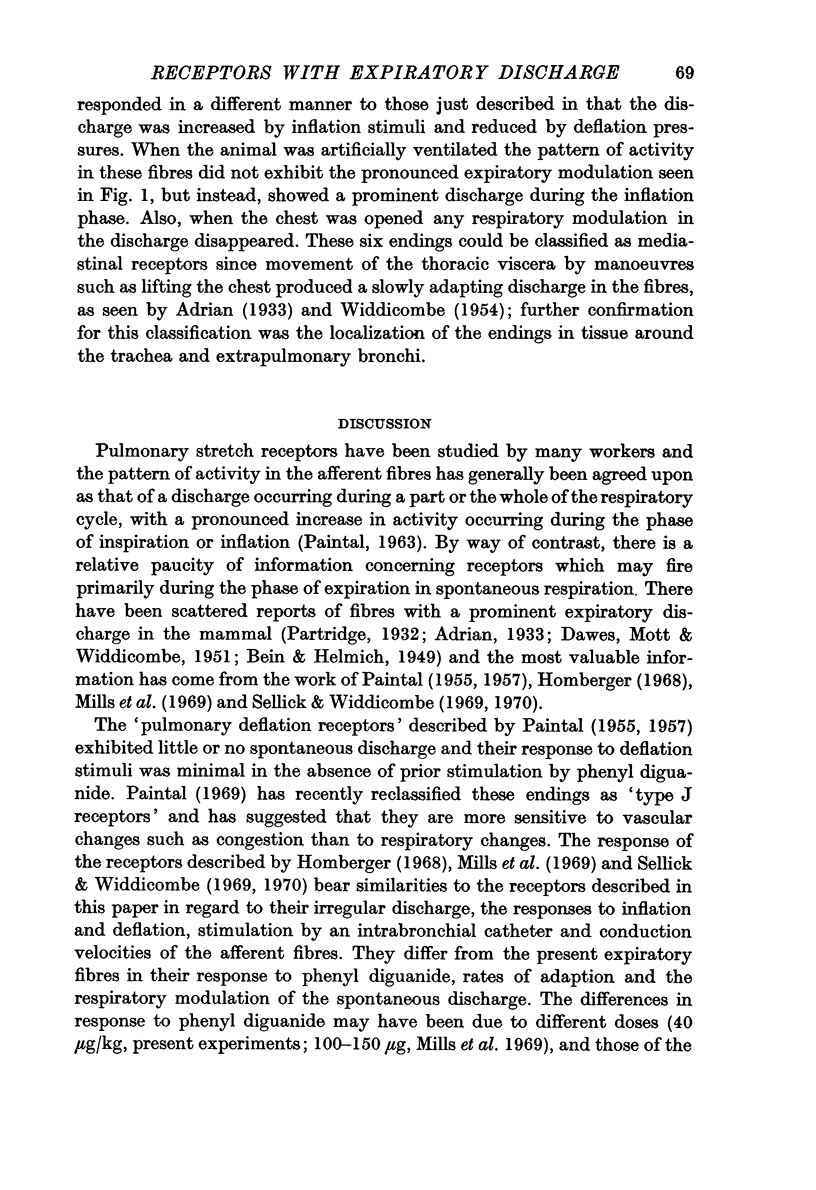
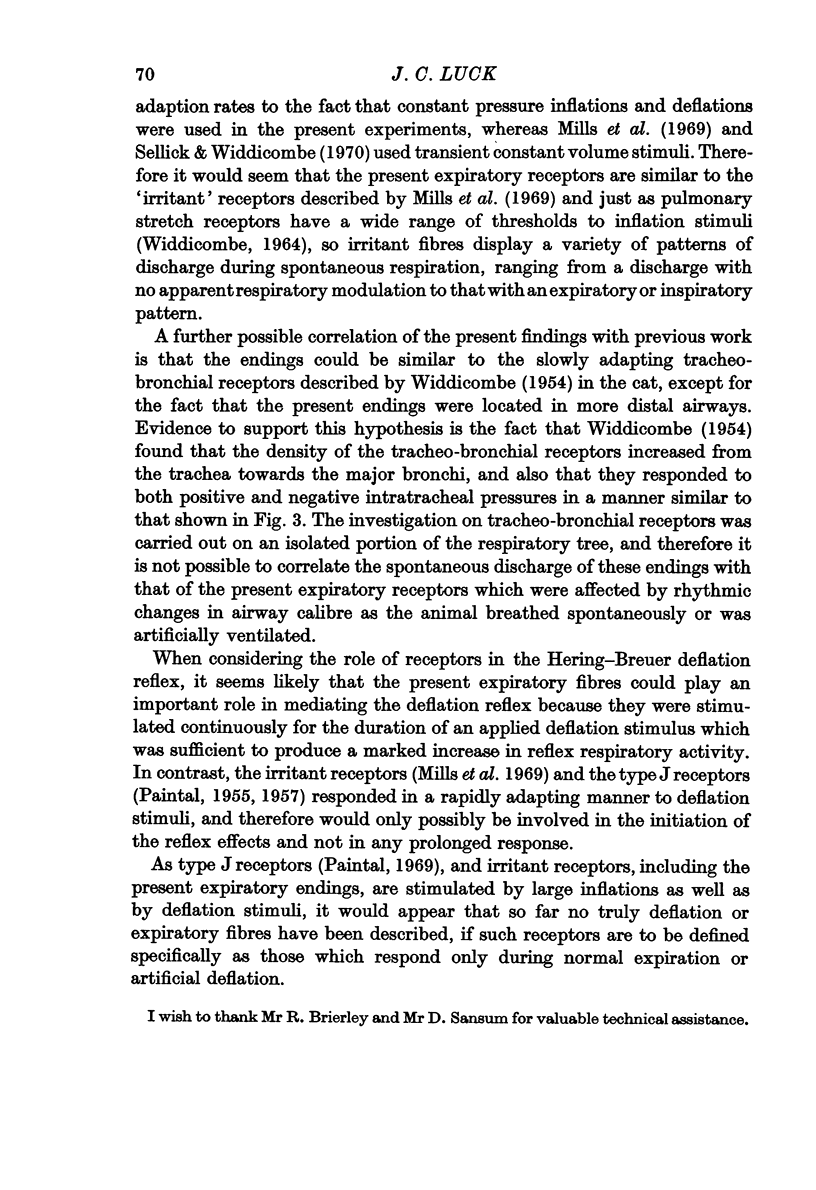

Selected References
These references are in PubMed. This may not be the complete list of references from this article.
- Adrian E. D. Afferent impulses in the vagus and their effect on respiration. J Physiol. 1933 Oct 6;79(3):332–358. doi: 10.1113/jphysiol.1933.sp003053. [DOI] [PMC free article] [PubMed] [Google Scholar]
- DAWES G. S., MOTT J. C., WIDDICOMBE J. G. Respiratory and cardiovascular reflexes from the heart and lungs. J Physiol. 1951 Nov 28;115(3):258–291. doi: 10.1113/jphysiol.1951.sp004670. [DOI] [PMC free article] [PubMed] [Google Scholar]
- Homberger A. C. Beitrag zum Nachweis von Kollapsafferenzen im Lungenvagus des Kaninchens. Helv Physiol Pharmacol Acta. 1968;26(1):97–118. [PubMed] [Google Scholar]
- Mills J. E., Sellick H., Widdicombe J. G. Activity of lung irritant receptors in pulmonary microembolism, anaphylaxis and drug-induced bronchoconstrictions. J Physiol. 1969 Aug;203(2):337–357. doi: 10.1113/jphysiol.1969.sp008867. [DOI] [PMC free article] [PubMed] [Google Scholar]
- PAINTAL A. S. The location and excitation of pulmonary deflation receptors by chemical substances. Q J Exp Physiol Cogn Med Sci. 1957 Jan;42(1):56–71. doi: 10.1113/expphysiol.1957.sp001243. [DOI] [PubMed] [Google Scholar]
- PAINTAL A. S. VAGAL AFFERENT FIBRES. Ergeb Physiol. 1963;52:74–156. [PubMed] [Google Scholar]
- PAINTAL B. A. Impulses in vagal afferent fibres from specific pulmonary deflation receptors: the response of these receptors to phenyl diguanide, potato starch, 5-hydroxytryptamine and nicotine, and their rôle in respiratory and cardiovascular reflexes. Q J Exp Physiol Cogn Med Sci. 1955 Apr;40(2):89–111. doi: 10.1113/expphysiol.1955.sp001116. [DOI] [PubMed] [Google Scholar]
- Paintal A. S. Mechanism of stimulation of type J pulmonary receptors. J Physiol. 1969 Aug;203(3):511–532. doi: 10.1113/jphysiol.1969.sp008877. [DOI] [PMC free article] [PubMed] [Google Scholar]
- Sellick H., Widdicombe J. G. The activity of lung irritant receptors during pneumothorax, hyperpnoea and pulmonary vascular congestion. J Physiol. 1969 Aug;203(2):359–381. doi: 10.1113/jphysiol.1969.sp008868. [DOI] [PMC free article] [PubMed] [Google Scholar]
- WIDDICOMBE J. G. Receptors in the trachea and bronchi of the cat. J Physiol. 1954 Jan;123(1):71–104. doi: 10.1113/jphysiol.1954.sp005034. [DOI] [PMC free article] [PubMed] [Google Scholar]
- Widdicombe J. G., Sellick H. Vagal deflation and inflation reflexes mediated by lung irritant receptors. Q J Exp Physiol Cogn Med Sci. 1970 Apr;55(2):153–163. doi: 10.1113/expphysiol.1970.sp002060. [DOI] [PubMed] [Google Scholar]


